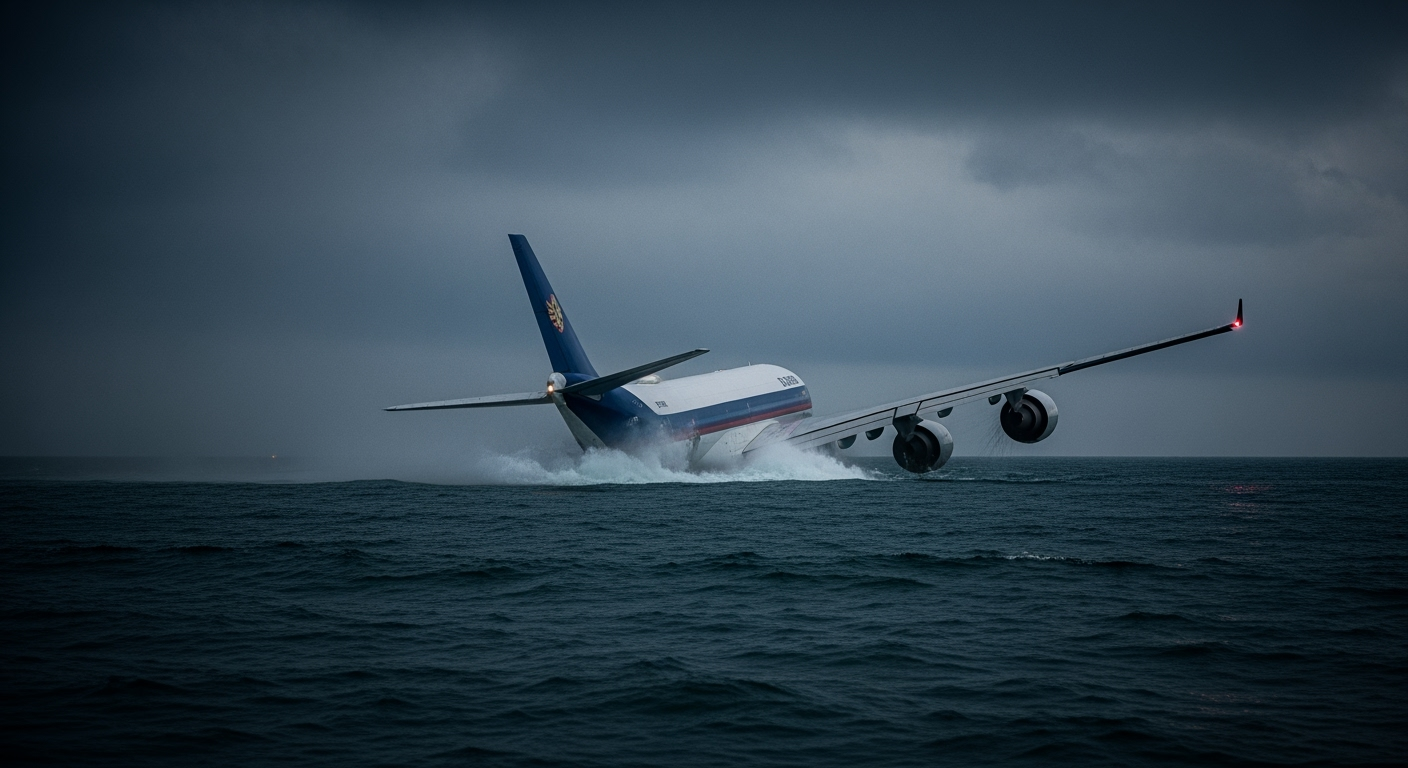Related Articles

Former French President Nicolas Sarkozy Begins Prison Sentence for Campaign Finance Conspiracy




HONG KONG – Two airport ground staff lost their lives early Monday morning when a cargo plane, attempting to land at Hong Kong International Airport (HKIA), veered sharply off the North Runway, struck their service vehicle, and plunged partially into the sea. The devastating incident, which occurred around 3:50 AM local time, sent shockwaves through one of the world’s busiest aviation hubs and immediately triggered a comprehensive investigation by Hong Kong authorities. While the four crew members aboard the Boeing 747 freighter were successfully rescued without serious injury, the tragedy underscores the inherent risks faced by ground personnel in the intricate dance of airport operations.
The ill-fated aircraft, a Boeing 747-400(BDSF) registered TC-ACF, was operating as Emirates SkyCargo flight EK9788 from Al Maktoum International Airport in Dubai when it encountered severe difficulties upon touchdown on HKIA's North Runway (07L/R). According to initial reports, the 32-year-old freighter, wet-leased from Turkish cargo carrier AirACT, failed to maintain its trajectory on the runway, veering left approximately 5,000 feet past the threshold.
The massive aircraft, traveling at a reported 90 knots (approximately 167 kilometers per hour) over the ground as it deviated, then collided with a ground service vehicle operating near the runway. The force of the impact was catastrophic, ejecting the two male occupants of the vehicle into the surrounding waters. One staff member, aged 30, was pronounced dead at the scene after being pulled from the sea at 5:55 AM. The second victim, aged 41, was rushed to North Lantau Hospital but succumbed to his injuries at 6:26 AM. Their identities were not immediately released, but their deaths cast a somber shadow over the normally bustling airport.
The 747 itself continued its uncontrolled movement, breaching the seawall and becoming partially submerged in the waters adjacent to the runway. Visual evidence from the scene indicated that the aircraft's tail section was severed upon impact with the seawall, and its nose also sustained significant damage. Flight-tracking data from Flightradar24 showed the aircraft hitting the water at 49 knots (approximately 91 kilometers per hour), with a final recorded speed of 43 knots (approximately 80 kilometers per hour) before coming to rest. Emirates confirmed that the flight had no cargo onboard at the time of the accident.
Following the crash, an extensive emergency response was immediately launched. Firefighters, marine police, and a Flying Service helicopter were swiftly deployed to the scene for rescue operations. The primary focus was on recovering the ground staff members and ensuring the safety of the aircraft's crew. All four crew members of flight EK9788 were successfully rescued from the partially submerged plane and transported to a hospital for examination, where they were confirmed to be unharmed.
The accident necessitated the immediate closure of HKIA's North Runway (07L/R) for safety and investigative purposes. This closure, however, did not cripple the airport's overall operations. Hong Kong International Airport, a facility designed for high-capacity traffic with multiple runways, was able to continue operations using its South and Central runways. Airport authorities stated that passenger flights did not appear to be significantly affected, minimizing disruption to travelers during the busy morning hours. The Airport Emergency Centre was activated to coordinate the extensive response efforts.
The Transport and Logistics Bureau (TLB) issued a statement expressing profound concern over the accident and deep sadness regarding the deaths of the two ground staff, extending condolences to their families. Officials emphasized that flight safety remains of "paramount importance" and pledged full cooperation among relevant departments.
The Boeing 747-400(BDSF) involved in the incident, with registration TC-ACF, has a significant operational history. Having completed its first flight in May 1993, the aircraft had been in service for 32 years. It originally operated as a passenger jet before undergoing conversion into a freighter, a common practice for older wide-body aircraft to extend their service life in the cargo sector.
The aircraft was part of the fleet of AirACT, a Turkish charter cargo operator also known as MyCargo Airlines, which provides additional cargo capacity to major airlines worldwide. For this specific flight, it was operating under a wet-lease agreement for Emirates SkyCargo, bearing the Emirates flight number EK9788. The distinction between the operator and the flight designator is a standard practice in air cargo logistics, but the responsibility for the aircraft's airworthiness and operational safety typically rests with the operating carrier, AirACT, in this wet-lease scenario.
Hong Kong's Air Accident Investigation Authority (AAIA) has taken charge of the investigation into the cause of the runway excursion. The Civil Aviation Department (CAD) and the Airport Authority Hong Kong (AAHK) have pledged their full cooperation with the inquiry, aiming to determine the precise sequence of events and underlying factors that led to the tragic accident.
Air accident investigations are typically complex and meticulous processes, involving detailed analysis of flight data recorders ("black boxes"), cockpit voice recorders, air traffic control communications, meteorological data, maintenance records, and witness accounts. Investigators will examine various aspects, including pilot actions, aircraft systems performance, runway conditions, visibility, and any potential external factors that may have contributed to the aircraft's inability to stop or remain on the runway. The findings of such an investigation are crucial not only for understanding this specific event but also for implementing recommendations to prevent similar incidents in the future, thereby enhancing global aviation safety standards.
The closure of the North Runway will remain in effect until the damaged aircraft can be safely removed and the runway thoroughly inspected and deemed safe for operations, a process that could take an extended period due to the scale of the damage and the complex salvage operation required for a submerged 747.
The incident at Hong Kong International Airport serves as a stark reminder of the complexities and potential dangers inherent in modern aviation, even on the ground. As the investigation progresses, the focus remains on uncovering the truth behind this tragic event and honoring the memory of the two lives lost, while upholding the paramount commitment to safety in the skies and on the ground.